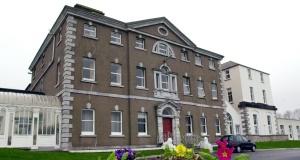|
Questions raised about mother-and-baby homes 75 years ago
By Claire O'sullivan
[with video] While some people may warn against judging the past with the knowledge of the present, the Government’s initial probe into mother-and-baby homes shows stark questions were being asked about death rates at the homes 75 years ago. Concerns were raised in and outside of the State in 1939 — with the quality of care even being raised by senior officials at the Department of Local Government and Public Health. Children born to unmarried mothers between 1923 and 1950 were four times more likely to die than those born to a married couple, according to studies of the Registrar General annual reports. The interdepartmental report published earlier this week shows that in 1939, the inspector for boarded out children in the Department of Local Government and Public Health, Alice Litster asked why illegitimate children living in impoverishment seemed to be faring better than those in the care of religious orders. “The chance of survival of an illegitimate infant born in the slums and placed with a foster-mother in the slums a few days after birth is greater than that of an infant born in one of our special homes for unmarried mothers... except the Manor House, Castlepollard, in which the infantile death rate is comparatively low,” Ms Litster said. “In theory, the advantage should lie on the side of the child institutionally born. Pre-natal care, proper diet, fresh air, sufficient exercise, no arduous work, proper and comfortable clothing, freedom from worry, the services of a skilled doctor, the supervision and attention of a qualified nurse, all should be available and should make for the health of the expectant mother and the birth and survival of a healthy infant… Cleanliness, medical attention, dietetic knowledge, all the human skill may continue to preserve child life should be at hand. Yet any infant born in any other circumstances appears to have a better chance of life”. Ms Litster said she had “grave doubts” about health boards continuing to send people to these homes “so long as no attempt is made to explore the causes of the abnormally high death rate”. “The illegitimacy birth rate shows an upward trend. In 1916 it was 1530; in 1925 it was 1662. We cannot prevent the birth of these infants. We should be able to prevent their death,” she concluded. Also in 1939 the League of Nations Advisory Committee on Social Questions examined the plight of the ‘illegitimate child’ in 22 countries and found that the higher rate of mortality in the children of unmarried women was due to the less favourable legal status and social and economic position of unmarried mothers. Figures a year later showed that 26% of illegitimate children born in Ireland died while in England and Wales that figure stood at just 8%.
|
.
Any original material on these pages is copyright © BishopAccountability.org 2004. Reproduce freely with attribution.
